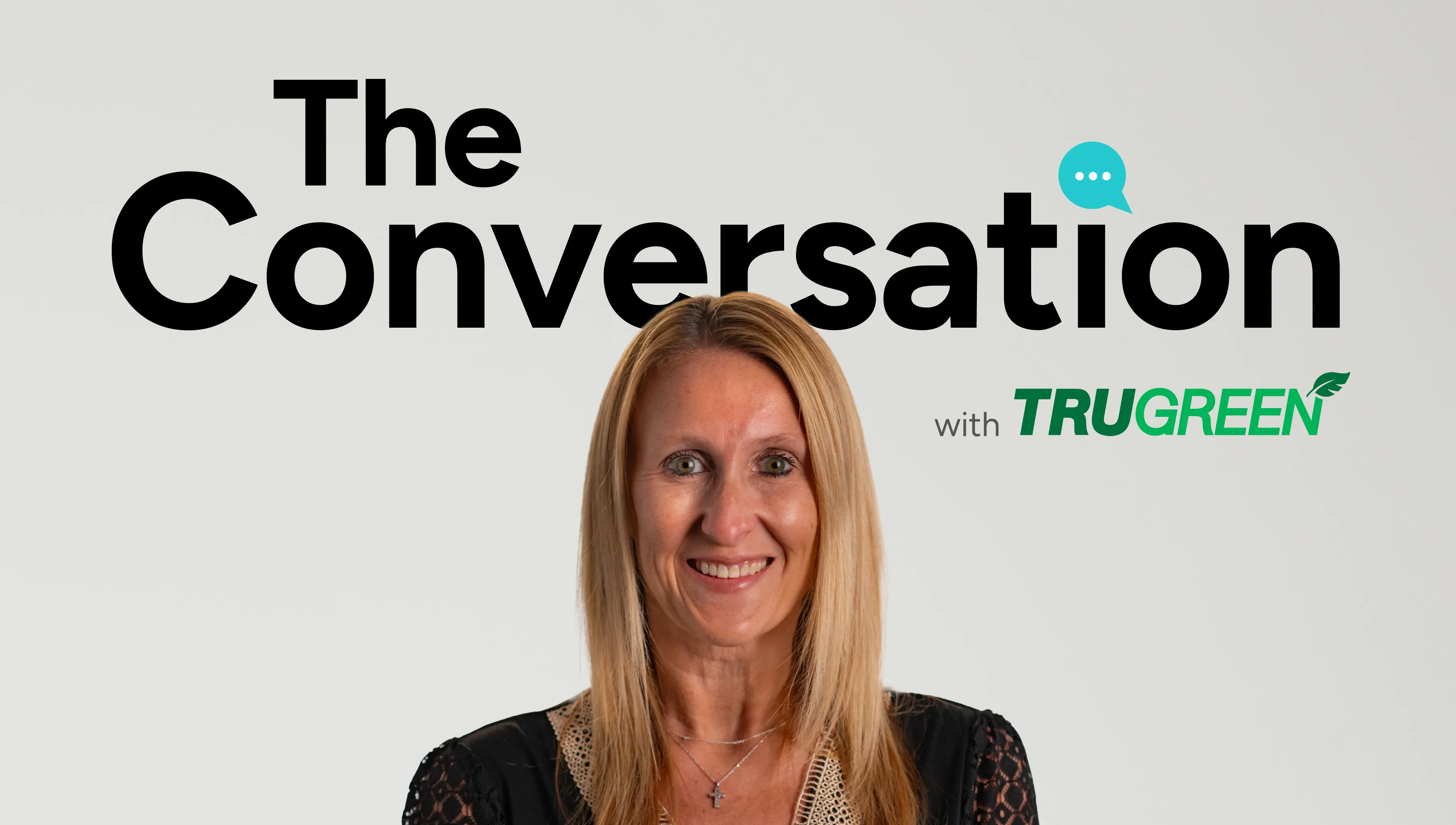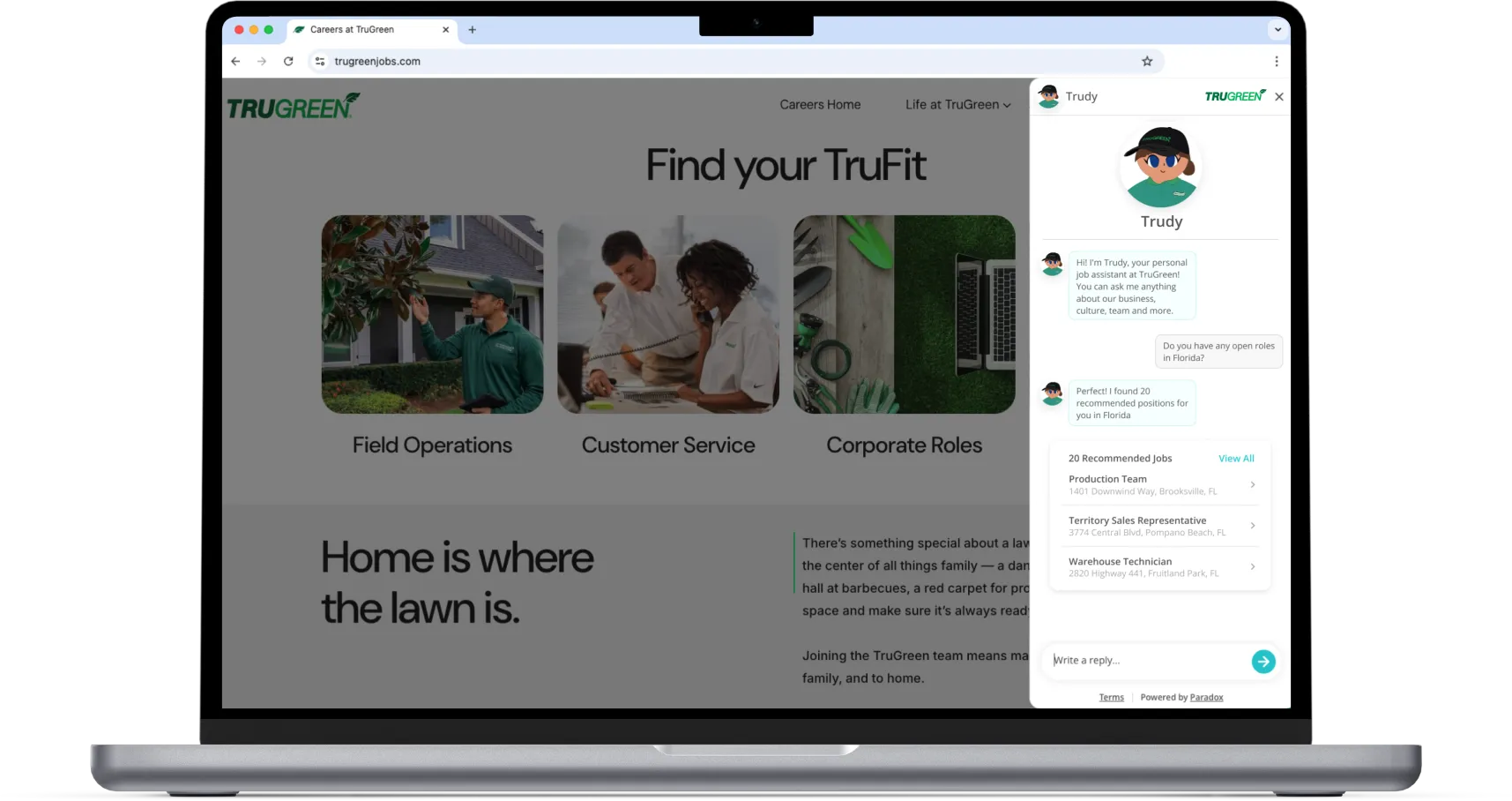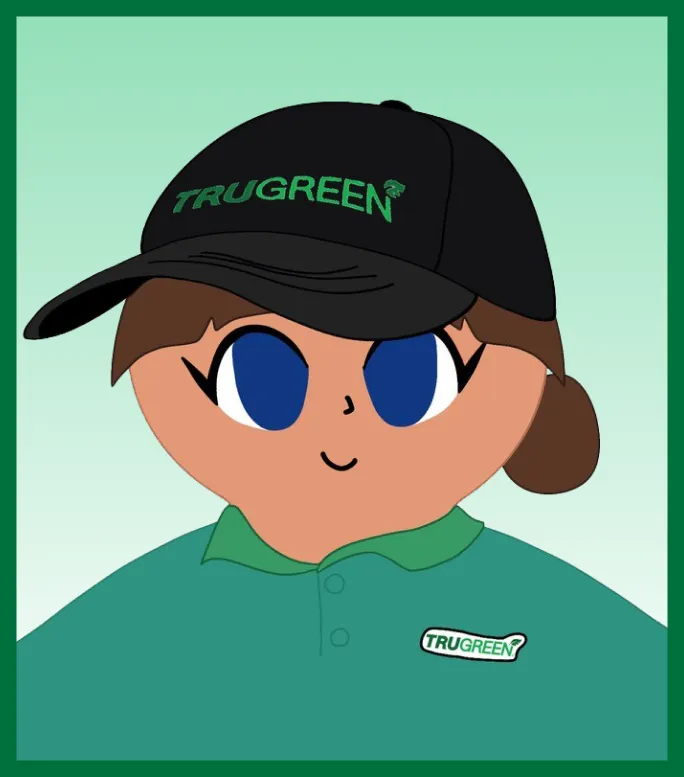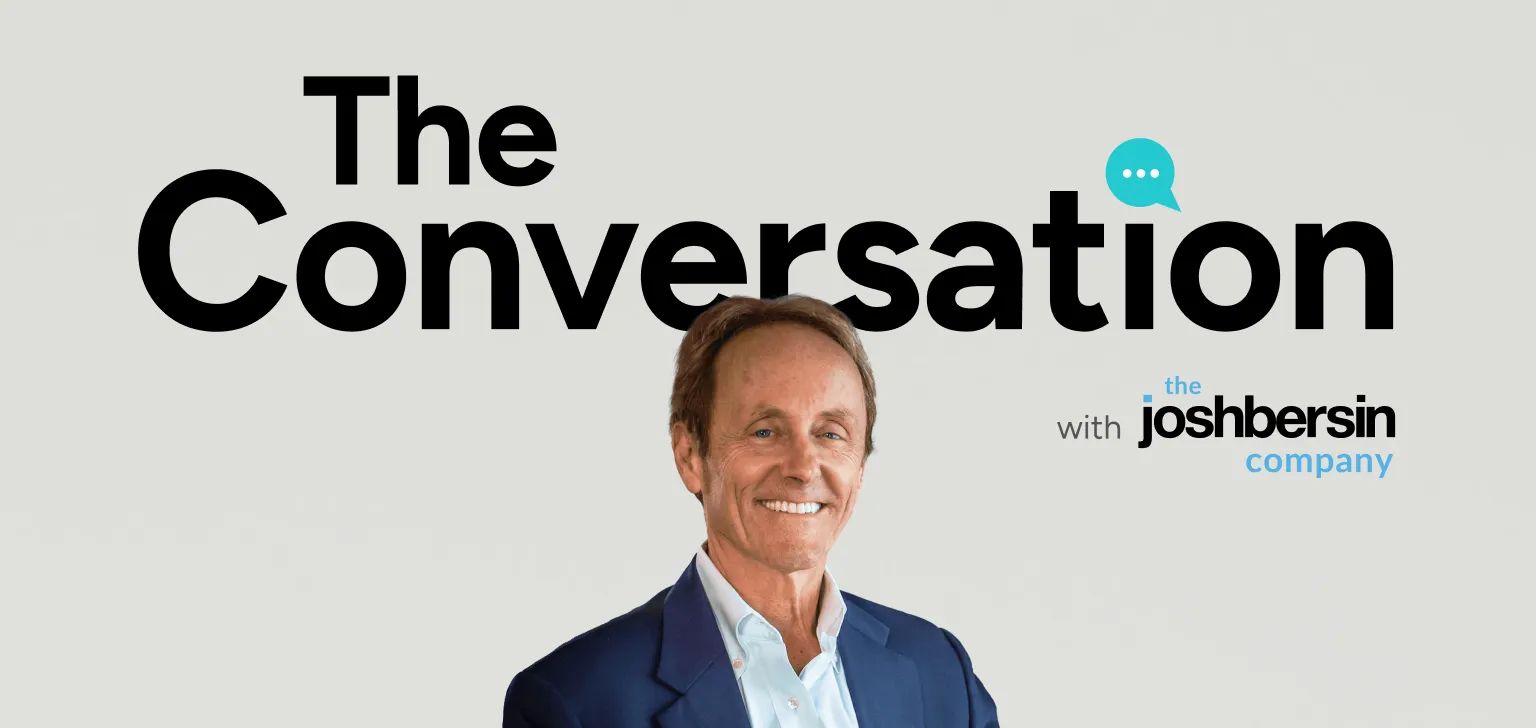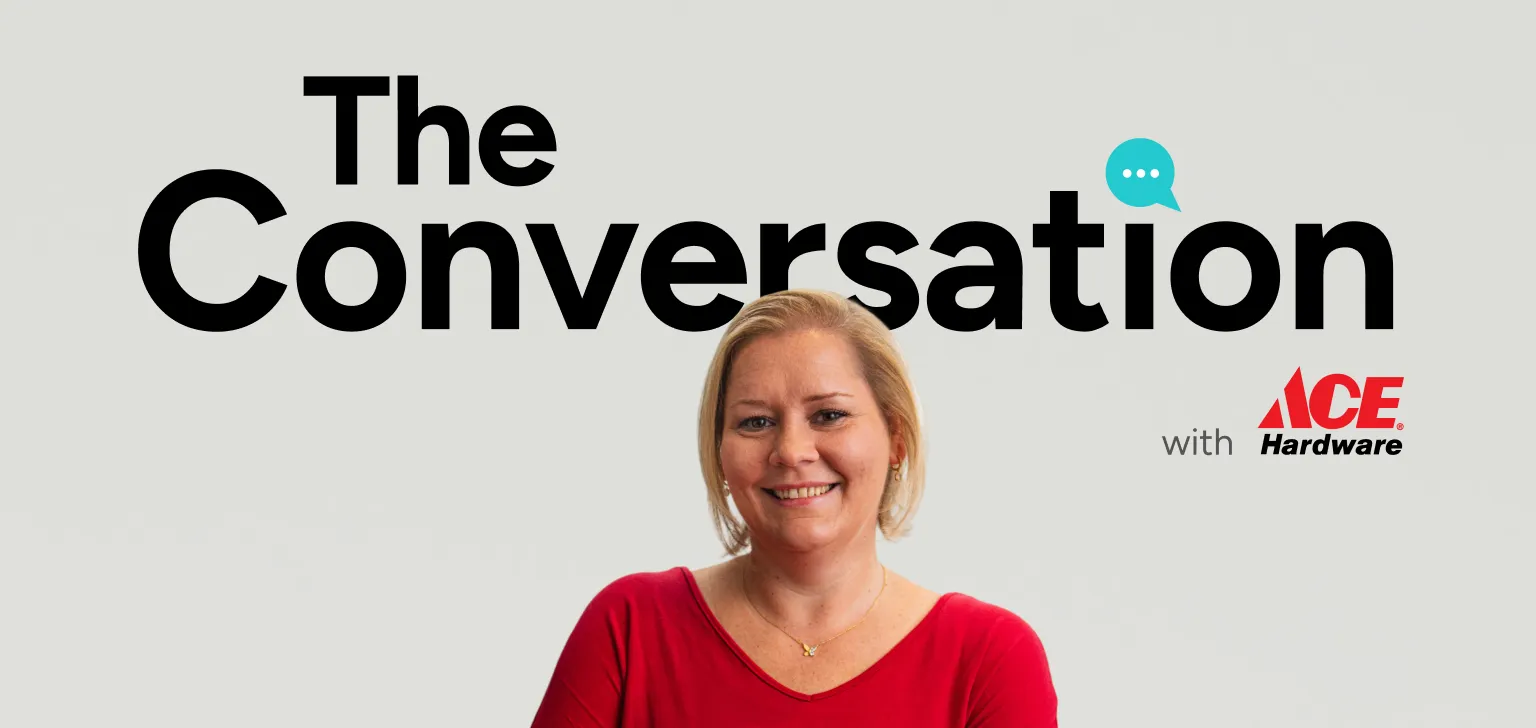TruGreen Senior Director of TA Jessica Manucy has worked in the industry for more than 20 years. When her gut says that a new piece of tech will save her team money, she’s usually right. But how do you gain that intuition? And how do you pitch an unclear ROI to your C-suite with confidence?
We recently sat down with Jessica to talk about her recent success at TruGreen, and how to build the perfect business case for new tech.
Erik Schmidt: What types of roles does TruGreen hire for, and how do your people add value to the business?
Jessica Manucy: The bulk of the people that we hire are either call center workers, salespeople, or part of the production team — those that do the actual lawn care. Our role in TA is make or break for our company. If you don’t have the right people in the right roles, we don't have a company. It's that simple. We have to have skilled salespeople that can go out and actually sell our products. We have to have people to actually go out and do the work that we’ve sold. And on the call center side, we need to have people that are skilled at talking to our customers. These roles are all important; they’re all make or break for us.
ES: I understand it’s incredibly important for you to get every hire right. Tell me about some of the challenges you had in finding ideal people for TruGreen?
JM: When I first got to TruGreen, we had a very clunky process. Essentially, we were asking candidates to apply in one system — our CRM — then we would manually qualify them, and then we’d ask them to apply again in our ATS. That wasn’t just difficult for our candidates, it was difficult for our recruiters. There was just a ton of time spent on administrative work which had to get done but nobody actually wanted to do. We also were functionally aligned, meaning we had a bunch of recruiters working on our sales team, and a bunch of recruiters working on our production team. Even though they were recruiting for the same locations, they didn't necessarily know what the other ones were doing. So we suffered from a lack of communication and a lack of alignment amongst our team.
ES: And you’ve recently implemented some automation into your hiring process. How is that helping your hiring needs?
JM: We are very seasonal in our hiring, and a lot of our 17,000 annual hires are made in the first five months of the year. When we compare our most recent hiring sprint to last years’, we were able to essentially hire the same number of people with significantly less interviews. That speaks to the quality of candidates coming in — our AI assistant Trudy ensures that the people we’re interviewing are qualified. And since adding Trudy, we’ve obviously needed less manual labor. We were able to get rid of the RPO we were working with altogether, saving $1.8 million YoY, all because of automation. That’s a $300 decrease in cost-per-hire.
And again, speaking to the quality of the candidates, it’s really helping us with our retention. The people that we’re hiring aren’t just qualified; they want to work here. When we have to replace people that leave us, it’s a huge time sink and a huge money sink. The retention piece of this all is just so big, and feeds into the coming years: We won't have to hire as many people next year because we found the right people this year that decided to stay with us.
ES: Historically, talent acquisition hasn’t been given the most financial resources. What advice would you give to someone who is struggling to manage and/or build their budget?
JM: You have to make sure that talent acquisition has a seat at the table. You have to create value for yourself — that is fundamental. A lot of the time, businesses are very financially driven; because talent acquisition is a non-revenue generating department, many people don’t truly understand how we work and how having the right people in place can be a make or break aspect of the company. So you have to make sure that everyone in the company understands your value, and be able to quantify that value too. Does that mean you have to brag a little about the things you’re doing to make an impact? Sure, but it’ll ultimately be worth it. I think that people are the heart of any business.
If you have the right people and you treat them well, then everything else will come. And it seems kind of crazy to me whenever I have to explain that to other people — they should already know the value of their own people. But sometimes you have to break it down for people that are in finance that maybe don't understand the people side of things and just let them know the opportunity cost for not having the right person in place. It doesn’t mean you’re always going to get a blank check. You still have to be really thoughtful about where you’re spending your budget.
And it’s important to remember that you’re not in it alone; I’m always talking to my peers about what’s working for them and where they’re looking to invest. Because who better to give you advice than someone going through or someone who has been through the exact same situation? I think a lot of the time you’re going to get a good answer if you aren’t afraid to ask the question.
ES: How do you go about proving ROI when you’re pitching a business case?
JM: This is one of my biggest pet peeves: when you’re asked to prove ROI before you’ve done something. I’ve been in TA for over 20 years — I know that when my gut tells me something is going to save us money that we’re going to save money, but how do I quantify that feeling for our team and make a good business case? A lot of the time, I’ll take a look at other companies’ case studies and try to pull a lot of that information together that plays into the finance side of things. ‘If we spend X dollars, that could help us with our retention or that could help us with not having to have as many background checks.’ Just finding a way to reduce things to cost-per-hire or a financial metric that will resonate.


